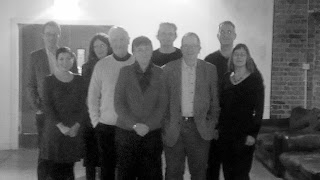Over the last few years I have worked more and more on the idea that the brain is a prediction error minimizer. This has now resulted in a book—
The Predictive Mind—just published with Oxford University Press.
 |
The Predictive Mind
By Jakob Hohwy |
The first part of the book explains the basic idea of prediction error minimization, which mainly stems from work by
Karl Friston and others in computational neuroscience. The second part applies this to the binding problem, to cognitive impenetrability, to delusions and autism, and to a range of philosophical questions about misrepresentation. The third part considers how it applies to attention, consciousness, the mind-world relation, and the nature of self.
The prediction error minimization idea says that all the brain ever does is minimize the error of predictions about its sensory input, formed on the basis of an internal model of the world and the body. The better these predictions are, the less error there is. On this view, the bottom-up signals in the brain, beginning with the sensory input, are conceived as prediction errors that work as feedback to the models maintained in the brain and their top-down predictions.
This is a simple idea, but with extreme explanatory ambition. Perception is the process of refining the models so that better predictions are formed, attention is predicting the sensory input precisely, and action is changing the input to fit with the model’s predictions. In this sense, perception, attention, and action are all best conceived in terms of statistical inference: the brain must use statistical tools to make sound inferences about the world based only on its sensory input.

.bmp)



